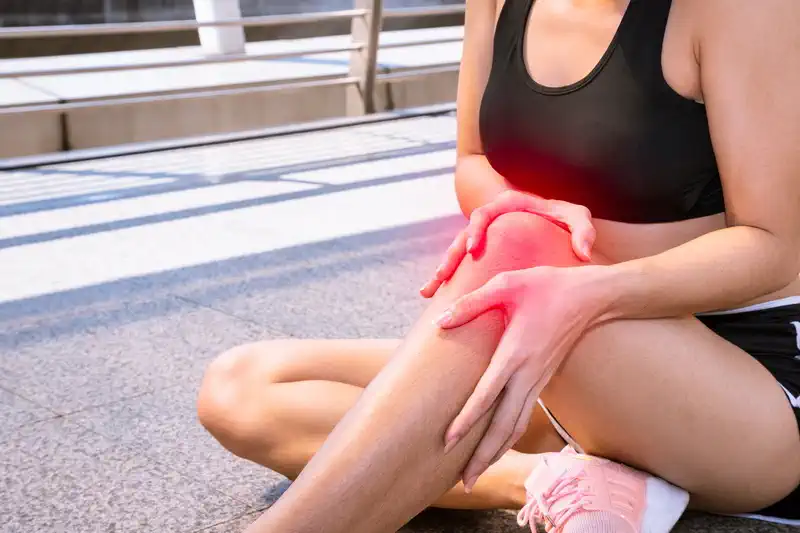Chondromalacia Patella Treatment in Toronto
Chondromalacia Patella: Effective Treatment & Prevention Strategies for Knee Pain Relief
Are you struggling with persistent knee pain? Discover everything you need to know about chondromalacia patella – commonly known as “runner’s knee” – including causes, symptoms, treatment options, and prevention tips to get you back on your feet pain-free.

What is Chondromalacia Patella?
Chondromalacia patella is a condition where the cartilage on the underside of the kneecap (patella) softens, wears down, or becomes irritated. This cartilage acts as a cushion, allowing smooth gliding over the thigh bone (femur). When damaged, movement becomes painful and may cause grinding or clicking.
It’s especially common among runners, cyclists, athletes, and individuals with prolonged sitting habits or poor knee alignment.
Common Symptoms Include:
- Dull, aching pain at the front of the knee
- Pain worsening with stairs, squatting, or sitting long periods
- Grinding, clicking, or popping during knee movement
- Mild swelling or tenderness around the kneecap
- Knee stiffness or instability
What Causes Chondromalacia Patella?
This condition is usually due to mechanical stress and cartilage wear. Contributing factors include:
1. Overuse and Repetitive Stress
- Running, cycling, jumping, or deep knee bending can cause irritation over time.
2. Patellar Maltracking and Poor Alignment
- If the kneecap doesn’t move smoothly within its groove, it may wear unevenly. This can be due to anatomical structure or muscle imbalance.
3. Muscle Imbalances and Weakness
- Weak quads, hips, or hamstrings alter kneecap movement and increase pressure.
4. Injury or Trauma
- Direct knee impact, dislocations, or ligament damage increase risk.
5. Foot and Lower Limb Mechanics
- Flat feet, overpronation, or poor footwear can misalign the knee from the ground up.
6. Anatomical and Demographic Factors
- Women are more prone due to wider hips affecting alignment. Adolescents are also at risk due to growth-related structural changes.
Your Feet Deserve Professional Care
Book your appointment today and take the first step toward healthier, pain-free feet.
How Common is Chondromalacia Patella?
It’s one of the leading causes of anterior knee pain, especially in young, active individuals. Up to 25% of young adults with knee pain are affected. It’s common among runners, cyclists, basketball players, and office workers who sit long hours with bent knees.
At-Home Treatments and Relief Strategies
Mild to moderate cases often respond well to conservative care:
1. Rest and Modify Activities
- Avoid high-impact activities
- Replace with swimming, cycling, or elliptical workouts
2. Ice Therapy
- Apply a cold pack for 15–20 minutes, 2–3 times per day
- Always use a towel to protect skin
3. Strengthening Exercises
Focus on proper kneecap tracking:
- Quadriceps: Straight-leg raises, wall sits, step-ups
- Hips and Glutes: Clamshells, bridges, side leg lifts
- Hamstrings: Gentle curls for knee support
4. Stretching and Mobility Work
- Daily stretches for quads, hamstrings, calves, and IT band
- Foam rolling helps improve flexibility and reduce tension
5. Improve Foot Support
- Use shoes with arch support and cushioning
- Consider orthotics for flat feet or pronation issues
6. Avoid Deep Knee Bends
- Don’t squat below 90 degrees
- Limit kneeling or prolonged sitting with bent knees
What Our Customers Say
When to See a Specialist
Look for help if symptoms last over 4–6 weeks or worsen:
- Locking or catching in the knee
- Significant swelling or redness
- Inability to bear weight
- Pain waking you at night
A physiotherapist or physician can:
- Perform a physical exam and imaging (X-ray or MRI)
- Design a personalized rehab program
- Recommend bracing or taping
- Discuss surgical options if needed
Advanced Treatment Options
If conservative care fails, options include:
Physical Therapy
- Eccentric strengthening and mobility exercises
- Blood flow restriction training for low-load muscle building
Surgical Interventions
- Arthroscopy: Smooths cartilage or removes fragments
- Lateral Release: Loosens tight structures to improve kneecap tracking
- Tibial Tubercle Transfer: Repositions the kneecap’s attachment
Surgery is a last resort and considered only after months of non-surgical treatment.
Real-Life Patient Story
Julie, 26, an avid runner, developed knee pain after ramping up her training. She felt grinding when climbing stairs. A physiotherapist recommended quad exercises and arch supports for her flat feet. After two months, her pain was gone and she resumed running pain-free.
Prevention Tips to Protect Your Knees
- Cross-train to avoid repetitive stress
- Replace worn-out shoes regularly
- Maintain a healthy weight to ease joint pressure
- Use foam rolling and mobility drills to maintain range of motion
Frequently Asked Questions (FAQs)
Is chondromalacia patella permanent?
Not always. With early care, many recover fully. Untreated cases can lead to chronic issues.
Can I keep exercising?
Yes, but choose low-impact exercises like swimming, biking, or elliptical training.
Does body weight make a difference?
Yes. Extra weight puts more strain on the knee. Losing even a little can help.
What kind of shoes should I wear?
Supportive shoes with arch support and cushioning. Avoid worn-out footwear.
When is surgery necessary?
Only after months of conservative care fail. It’s used to repair cartilage or realign the kneecap.
Take Control of Your Knee Health Today
Chondromalacia patella can be frustrating, but early action makes a big difference. With proper footwear, targeted rehab, and expert guidance, most people return to their favourite activities without pain.
Your knees support every step – give them the care they deserve.
Looking for better foot support? We're just around the corner.
Call us today at
